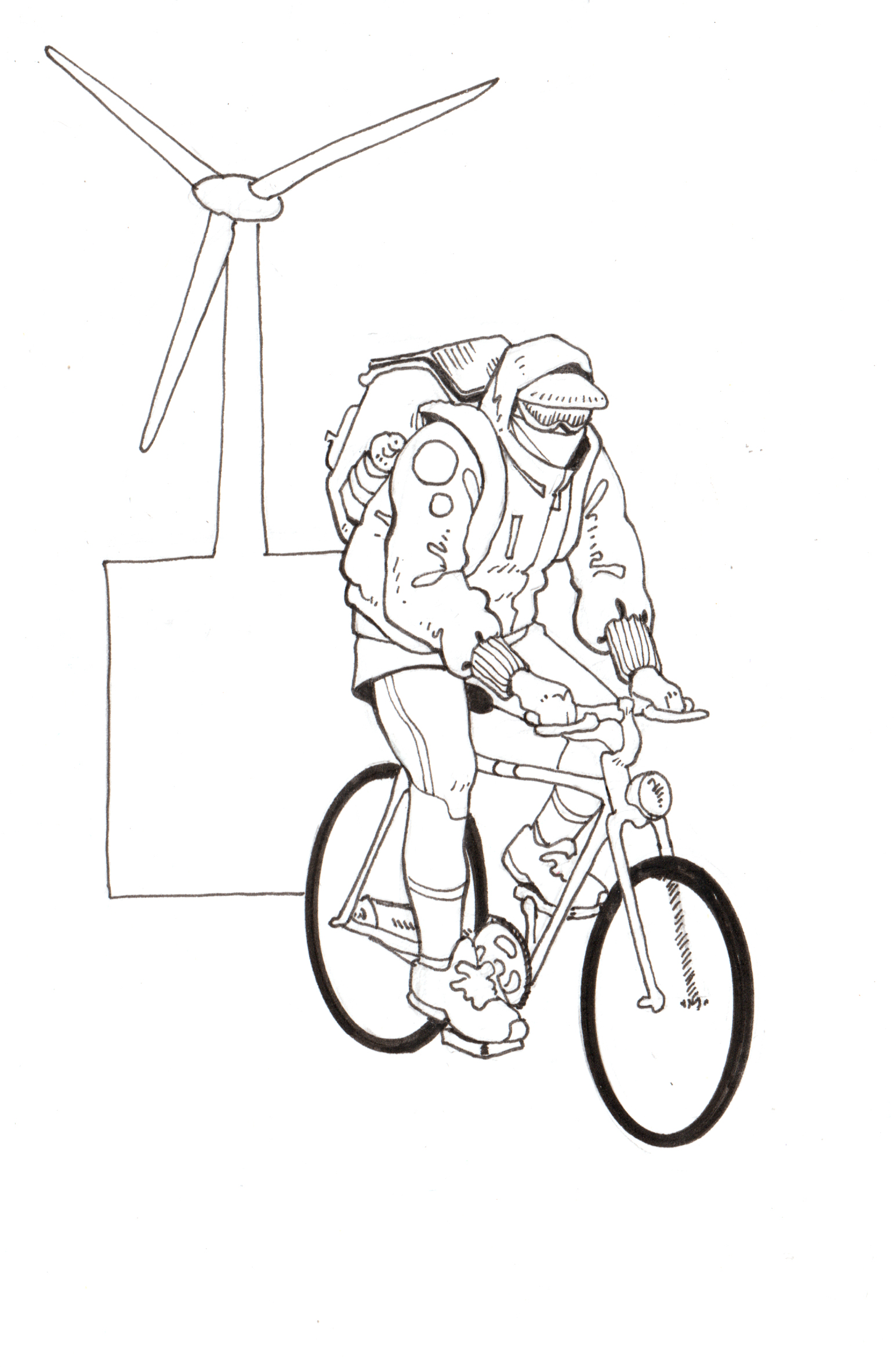
DAY 1
A morning commuter cycles past a leisurely spinning wind turbine. A backpack mounted solar panel charges his personal electronics as the sun rises.

I did Inktober every year from 2016 to 2020, but this is the one I'm most proud of. I have a lot of really deep anxiety about climate change, pollution, and ecological collapse so I tried to tackle that by envisioning different ways we could adapt to and rehabilitate our changing world over the next century or two. I ended up having a lot of people reach out with suggestions and I had a lot of good conversations. I also owe a huge debt to https://www.lowtechmagazine.com/. I'd like to come back to these ideas some day...

A morning commuter cycles past a leisurely spinning wind turbine. A backpack mounted solar panel charges his personal electronics as the sun rises.

A China Shipping Development Co. freight barque glides into harbor ready to unburden itself of its cargo. Carbon taxes and environmental regulations have rendered diesel ships economically untenable and a new Age of Sail has begun.
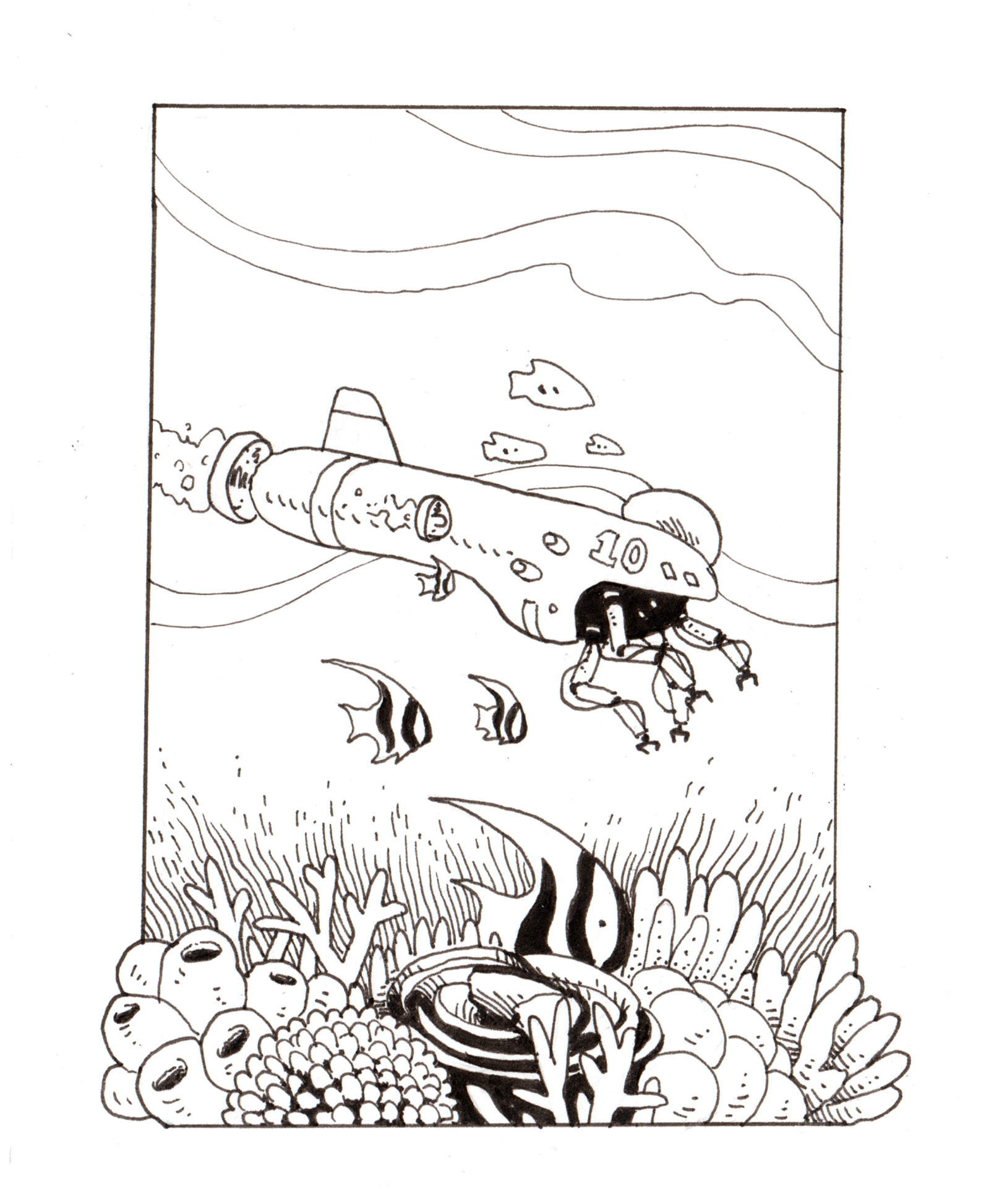
An autonomous reef repair submersible navigates through the coral shallows. Its manipulator arms are used to attach and epoxy coral fragments to artificial reef structures which then allow the corals to grow safely.
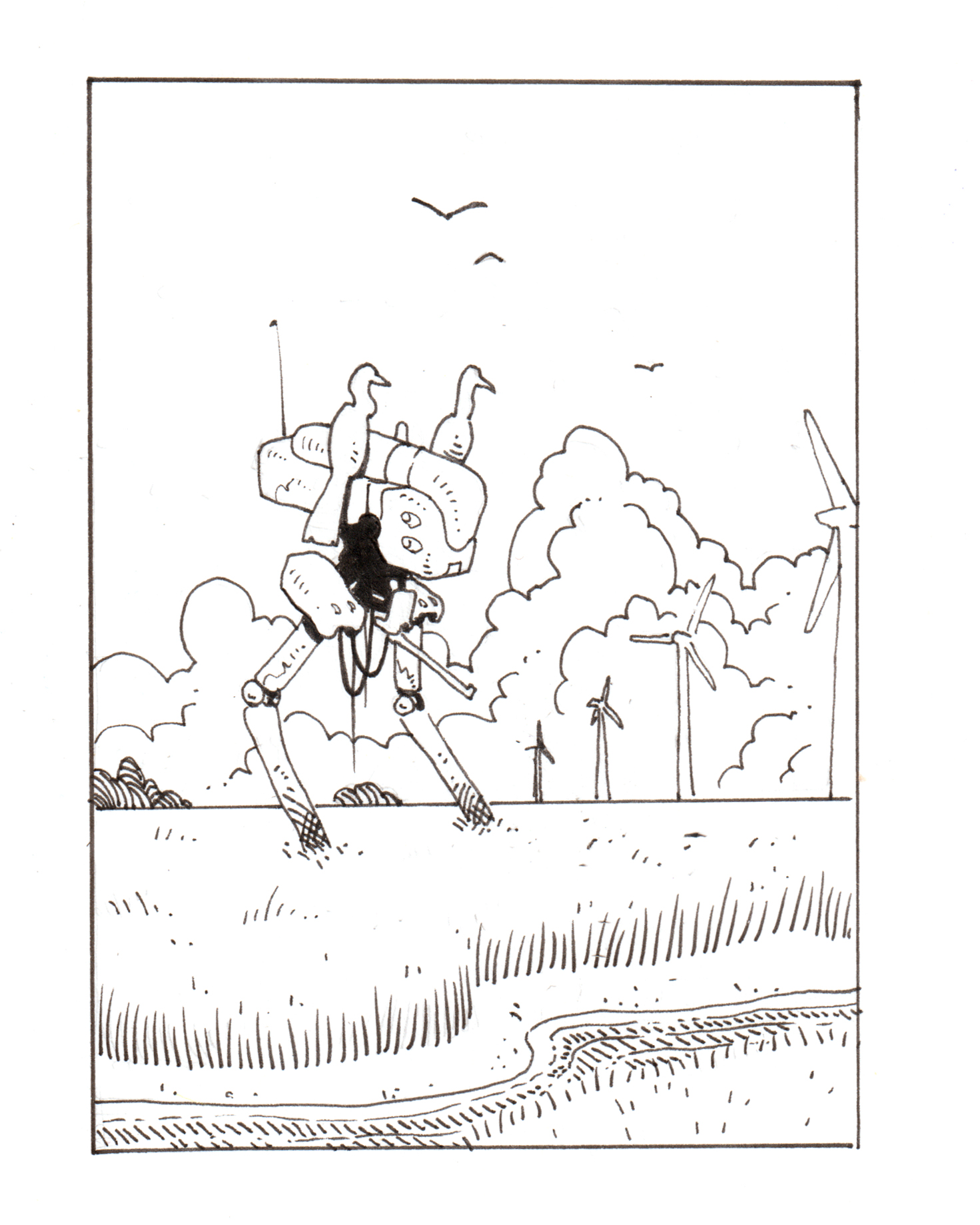
An abandoned war strider rusts away in a salt marsh on the coast of the Carolinas, its purpose long forgotten.
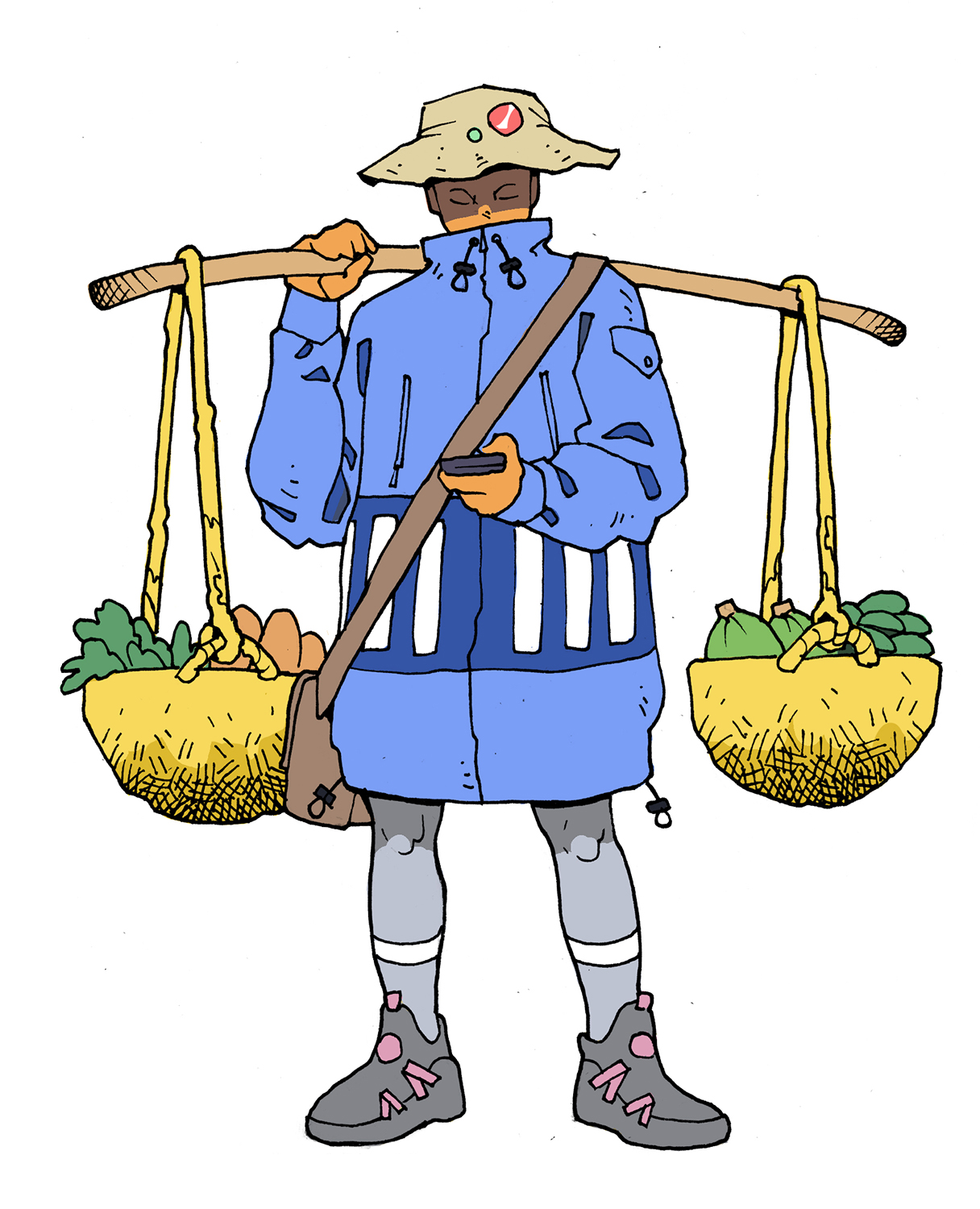
A shopper takes a moment to look at his phone, his groceries hanging in the plarn-knit baskets he carries. Plastic bans and packing reductions have transformed the activity of markets into scenes that wouldn’t be too out-of-place in the 19th century.
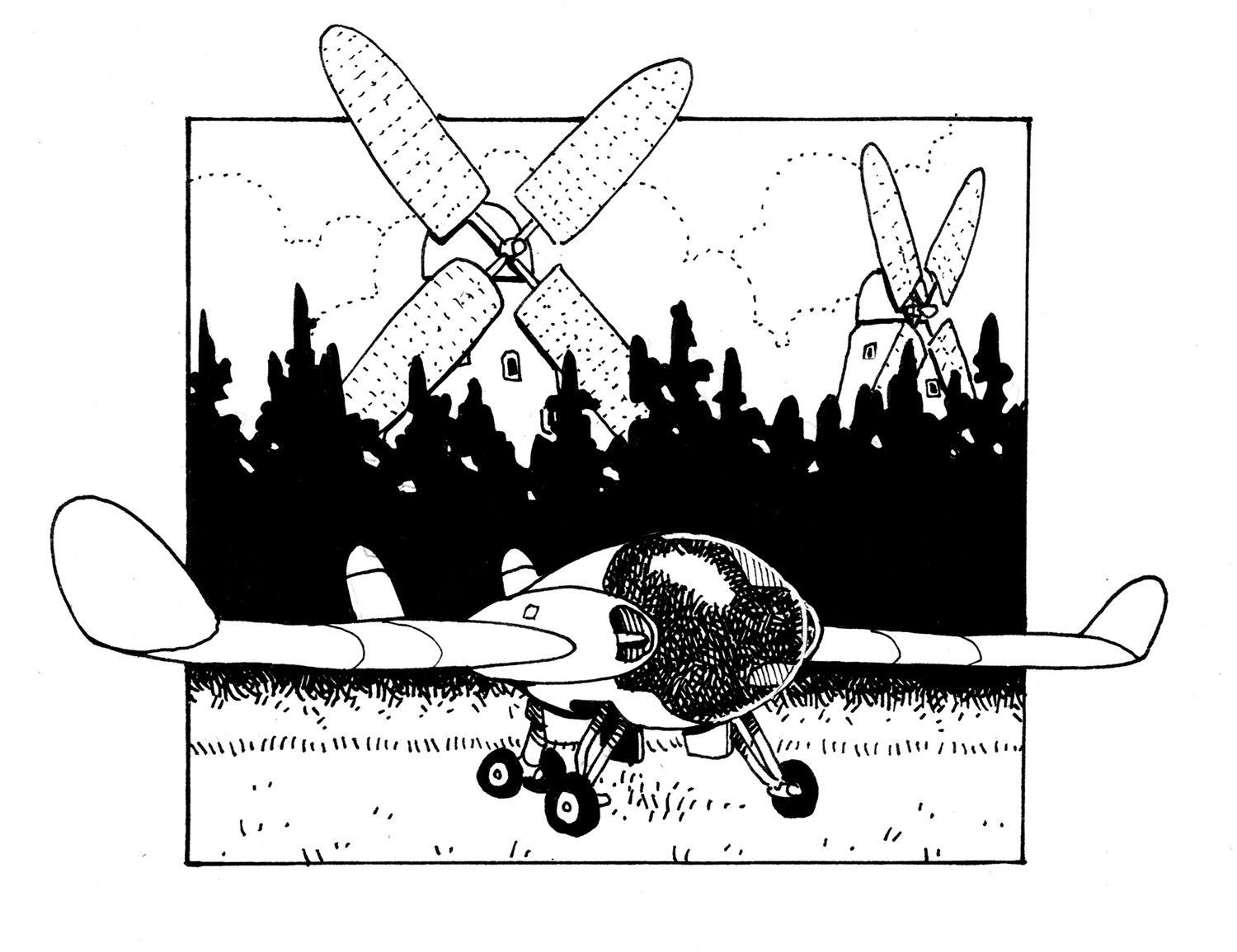
The mills at Pineborough are famed for miles around for the quality of wood they produce. Timber felled there finds its way into new mills, boats, carriages, and even Pineborough’s own laminated veneer lumber aircraft- affectionately nicknamed “Woodwinds”

The slow death of consumer society was the death of the McMansion and suburban sprawl. As the suburbs rotted away, new vernacular architectures arose to replace them- inheritors of the legacy of the wigwam and the thatched cottage, grown up in the shadows of rusting factories and shuttered corporate offices.

Two mechanics pose with a newly completed utility truck. Resource scarcity, high shipping costs, and oversupply of vehicles killed off large, multinational auto corporations in the late 21st century and consequently most new vehicles are made-to-order by skilled laborers in community fabrication shops, typically from locally-sourced materials.
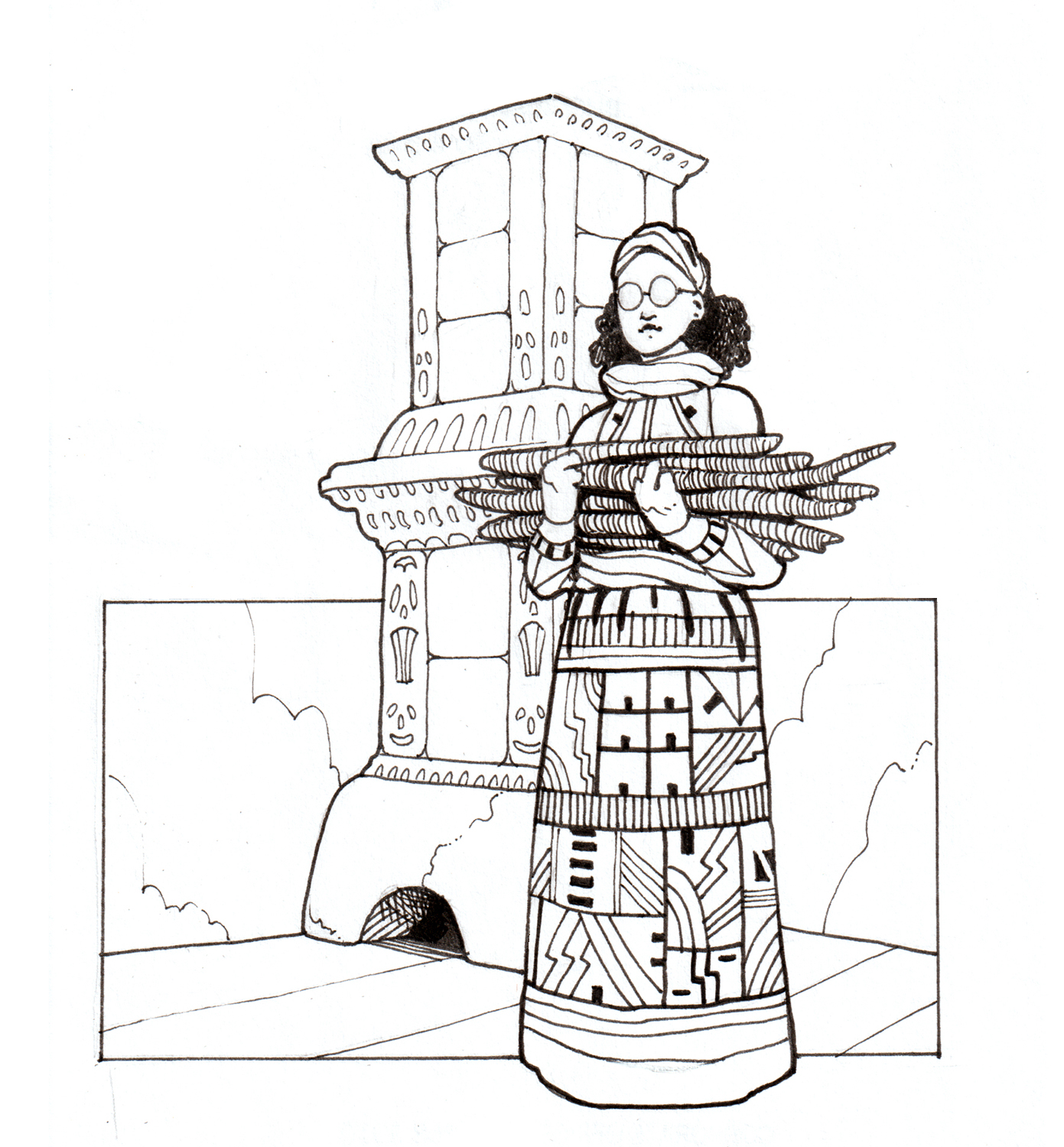
Fuel shortages and restrictions in the late 21st century left millions of people literally out in the cold. A warming planet was little comfort to the inhabitants of rural North America and Central Asia where winters still brought freezing temperatures each year. A result of this was the resurgence in popularity of a mostly forgotten technology- the masonry heater or “cocklestove” which is capable of heating a room with much greater efficiency than a metal stove or fireplace. Even when large-scale electricity grids came back online in the late 22nd century the large ceramic bulks where still a common site in northern climes.
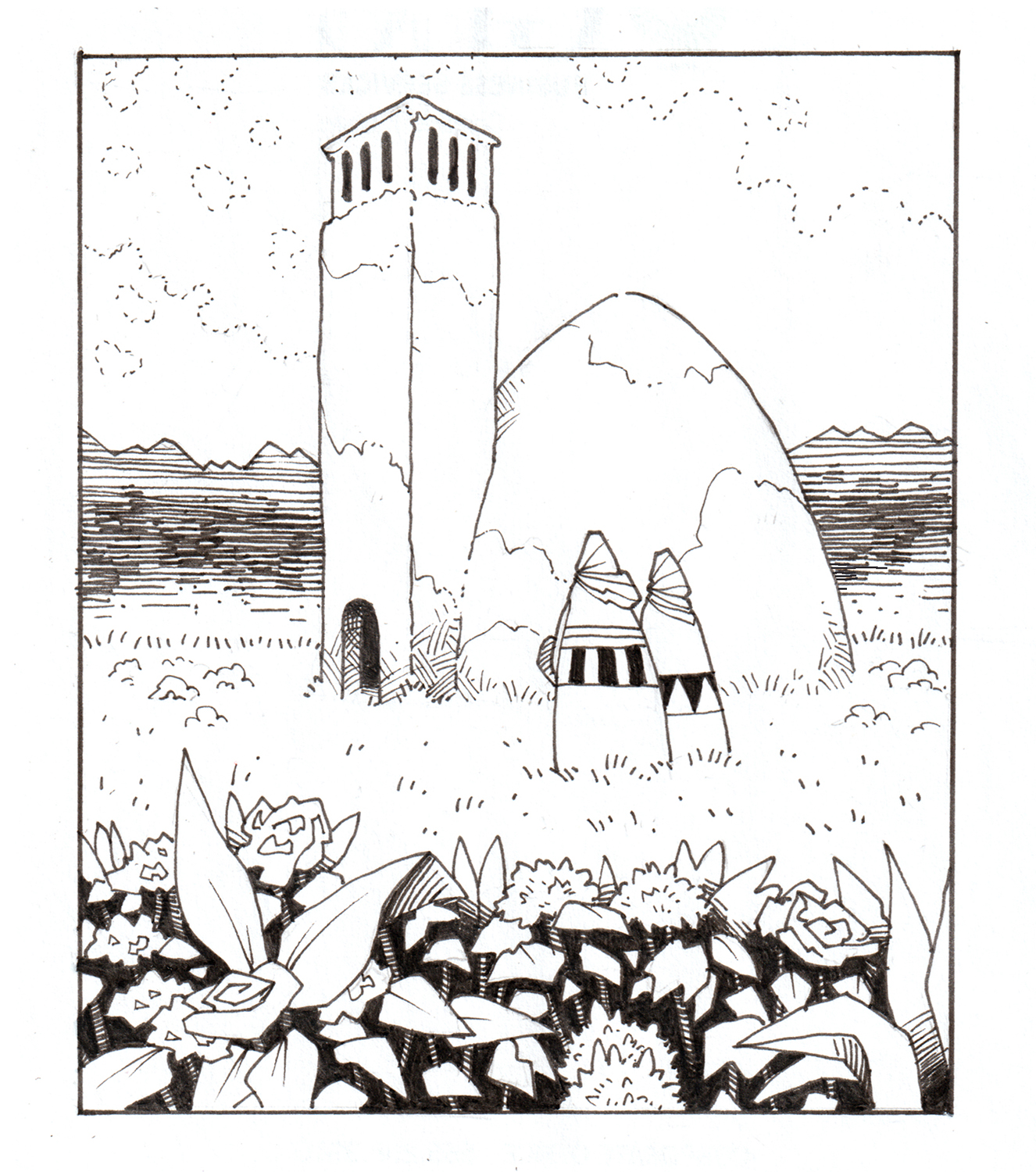
Two women take a walk in front of a yakhchāl equipped with a windcatcher. In the 21st and 22nd centuries communities in the path of desertification often had to resort to unpowered techniques of irrigation and climate control. Persian qanat systems and their associated technologies, for example, were transplanted with some degree of success to the Southwestern United States, central Australia, the Atacama desert region, and Mongolia.

An interesting cultural artifact of 21st century global warming was the reorganization of firefighting companies into powerful political entities. As their services became desperately needed to fight wildfires as well as urban fires in cities built increasingly from wood to comply with sustainability mandates, firefighter crews were able to demand higher pay, more benefits, and greater clout overall. The lesson of the infamous firefighters’ strike during the Great Orange County Burn was well-learned by local and state governments.
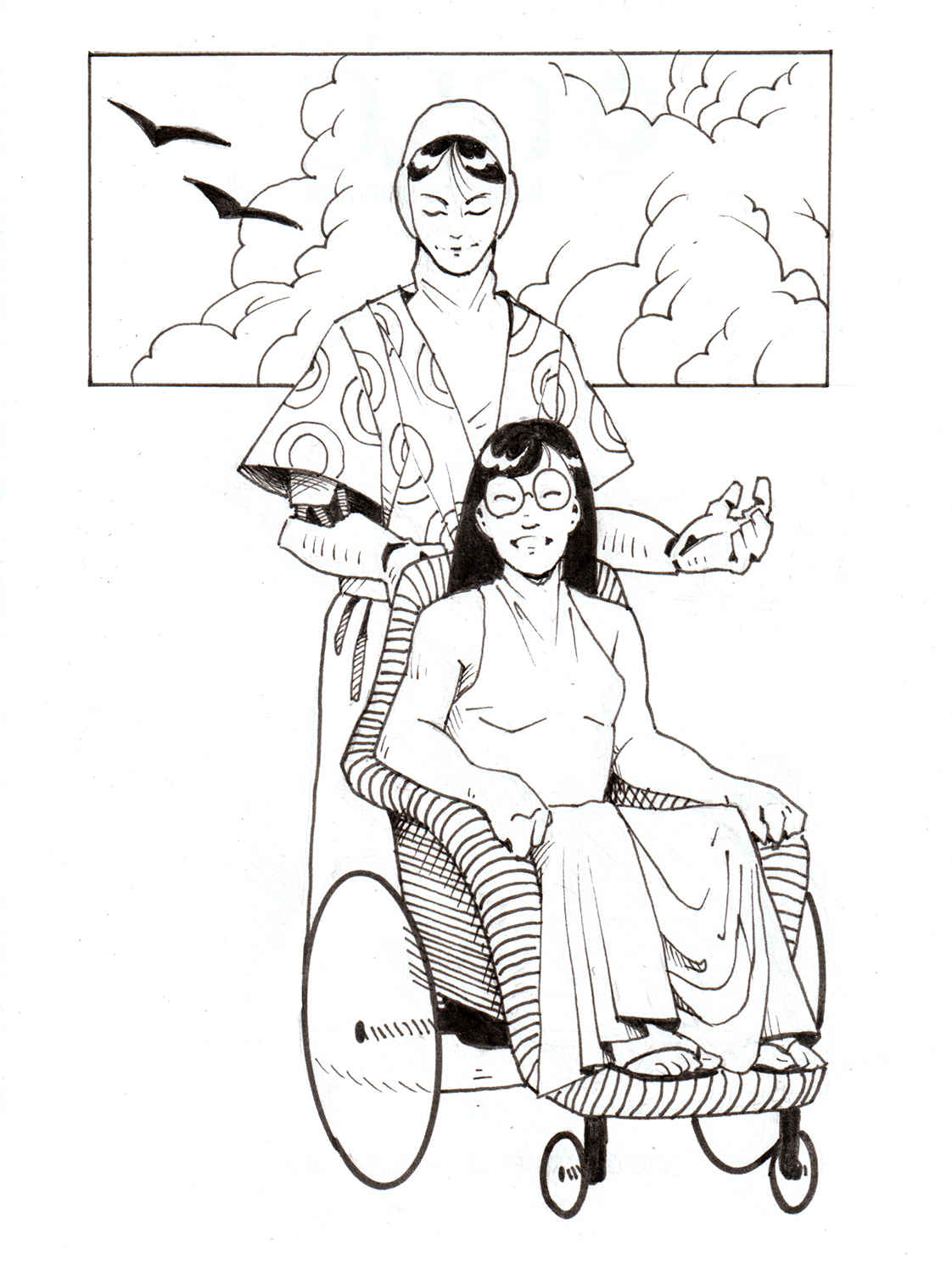
The global decay of national infrastructures and the growth of poverty in the 21st and 22nd centuries contributed to the decline of medical care in poorer regions and the subsequent increase in handicap conditions. Responses were generally homebrewed- mobility aids and prosthetics cobbled together based on open source schematics downloaded on good days when the power was on the and internet up.
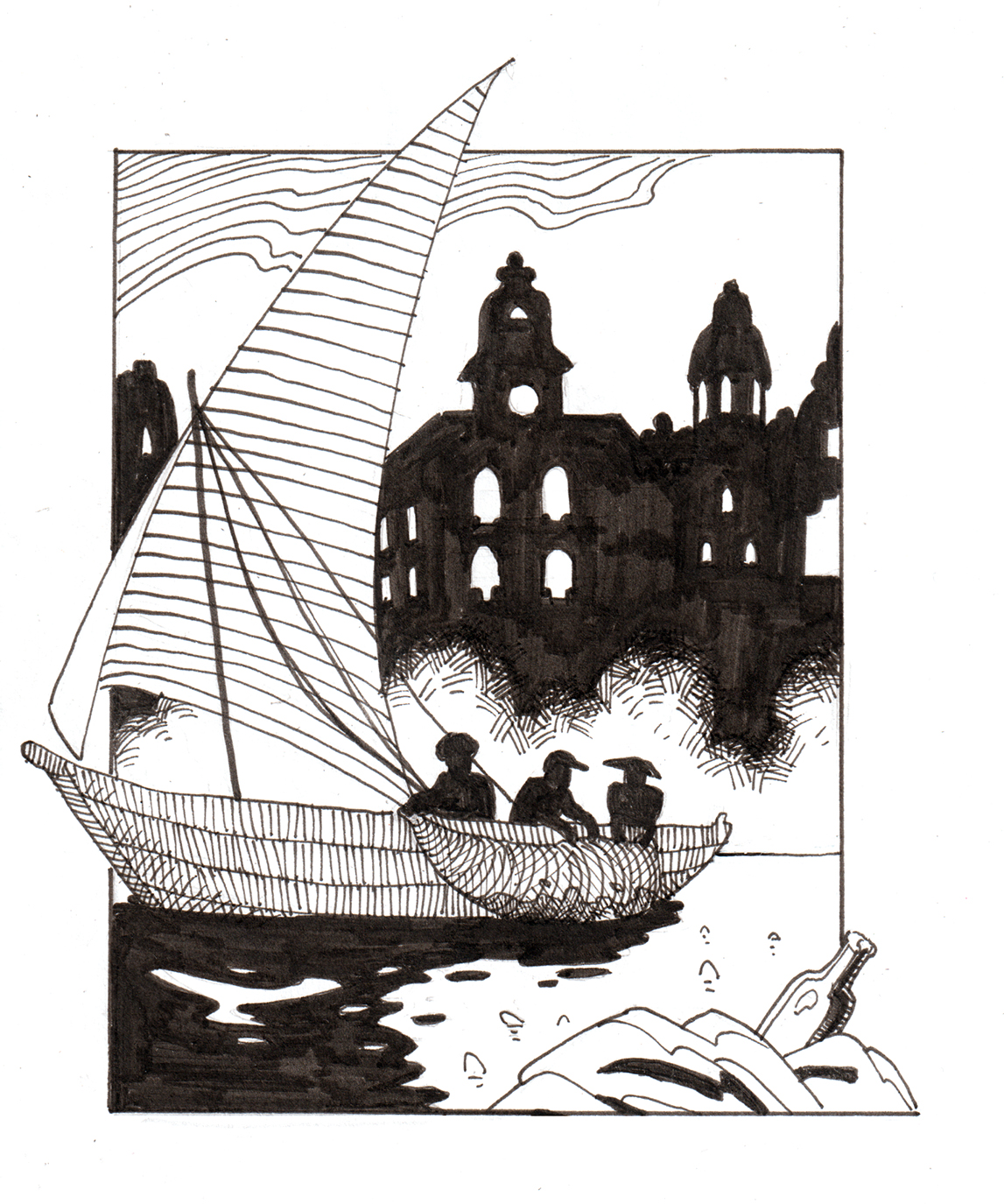
Sailors in a dhow comb the water for trash. In the late 21st century, plastic buy-back programs were instituted all over the globe to incentivize the clean-up of vital waterways as well as to reclaim and recycle waste plastic as petroleum became increasingly scarce and precious.

A farm worker stoops to gather crops in the greenhouse fields surrounding Solar Updraft Tower No. 5 in Imperial County, CA. In the late 21st century, such towers became ubiquitous in sunny rural areas.
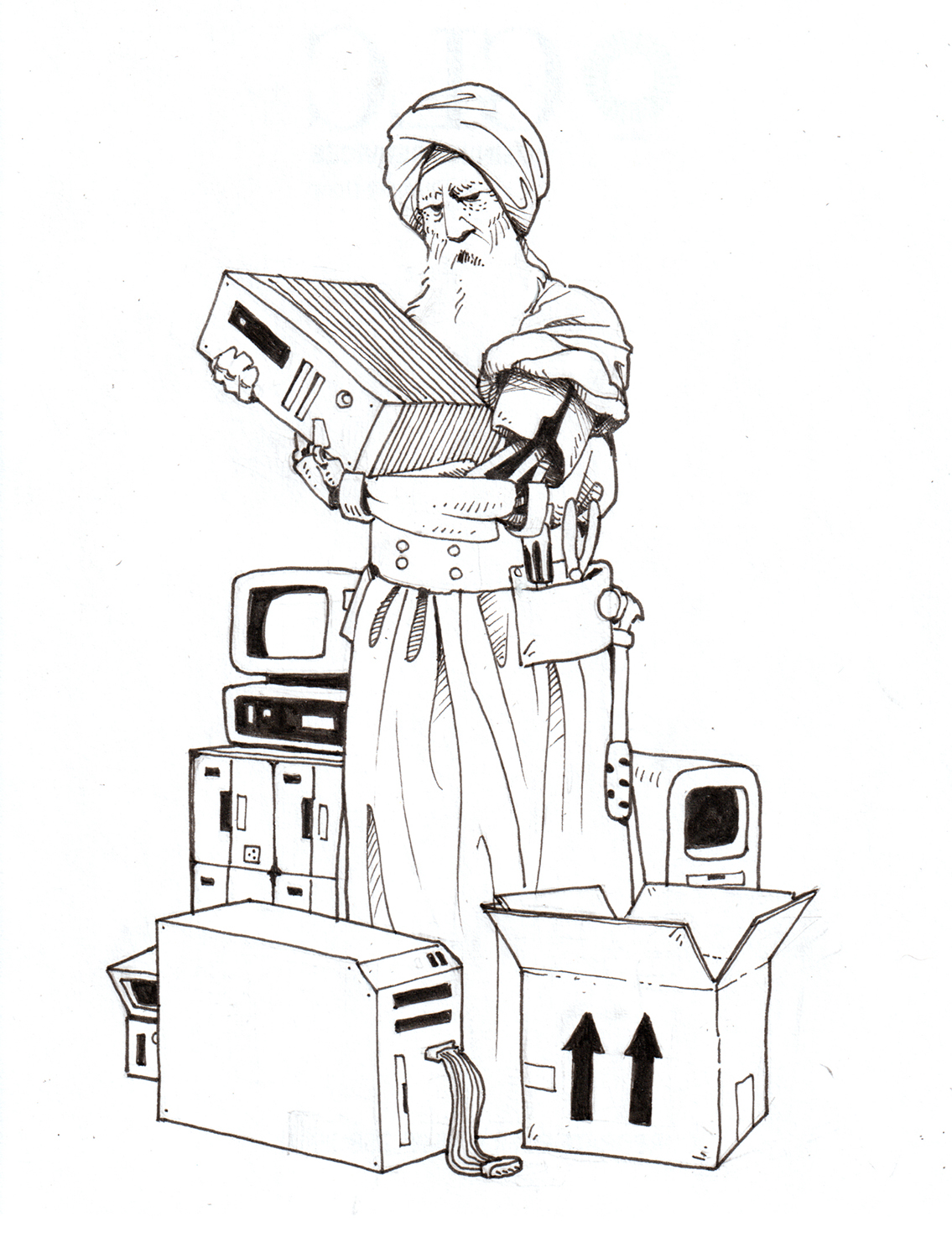
The requisition of rare earth metals for state enterprises, prohibitive shipping expenses as fuel costs rose, and a thousand other complications combined to tank the consumer electronics industry in the 2080s. Consequently, computer repair technicians were elevated to a state of new importance within communities that were forced to make do and upkeep what they already had.
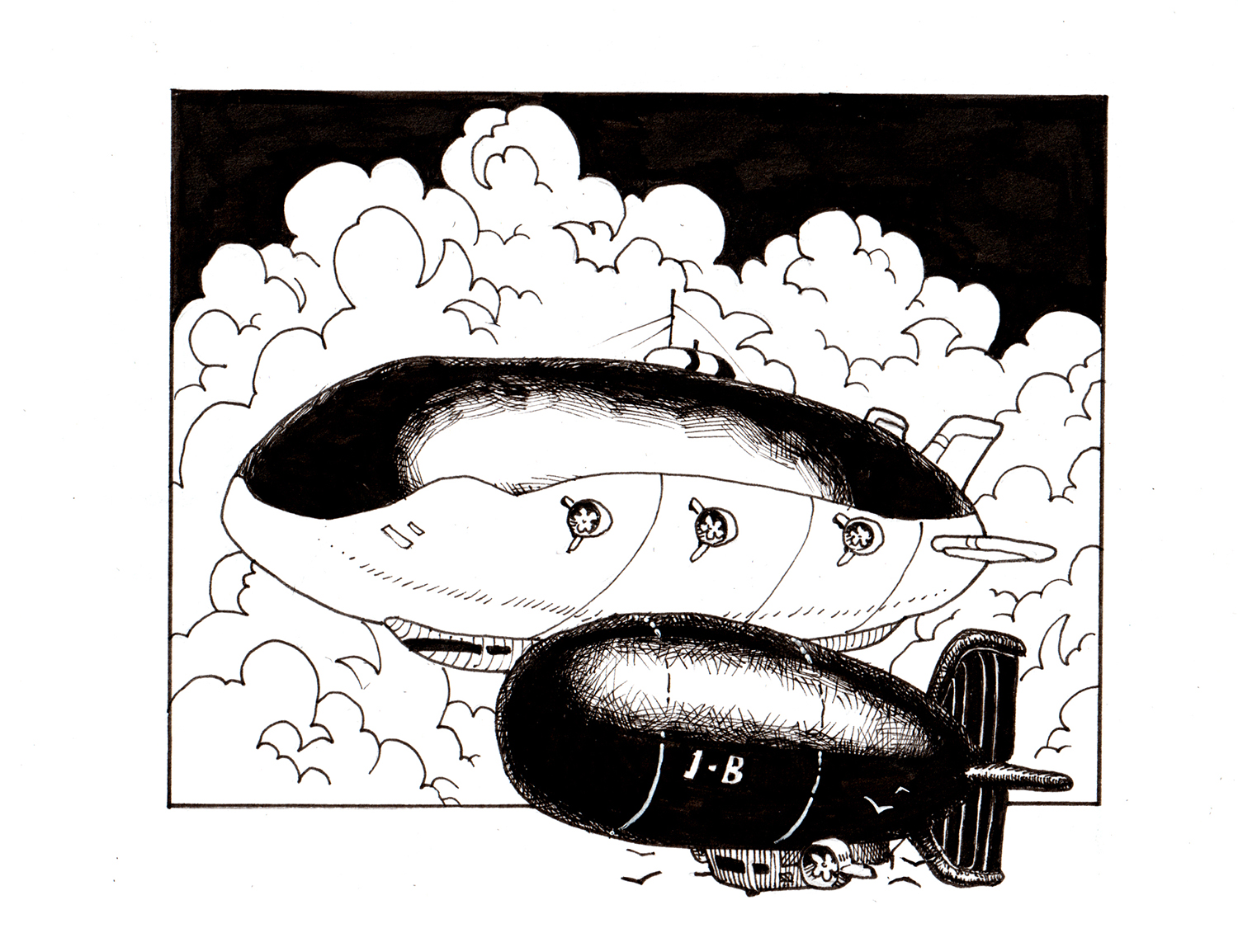
Airships saw a revival in usage in in the second half of the 21st century as the cost of fueling heavier-than-air travel grew. Solar-heated thermal blimps dominated short-range commuter air travel, especially in places such as northern Canada and Siberia that with the thawing of permafrost saw increased settlement but poor infrastructure development. Large, long-haul cargo blimps were typically of hybrid design with a skin of solar panels coating the top half.
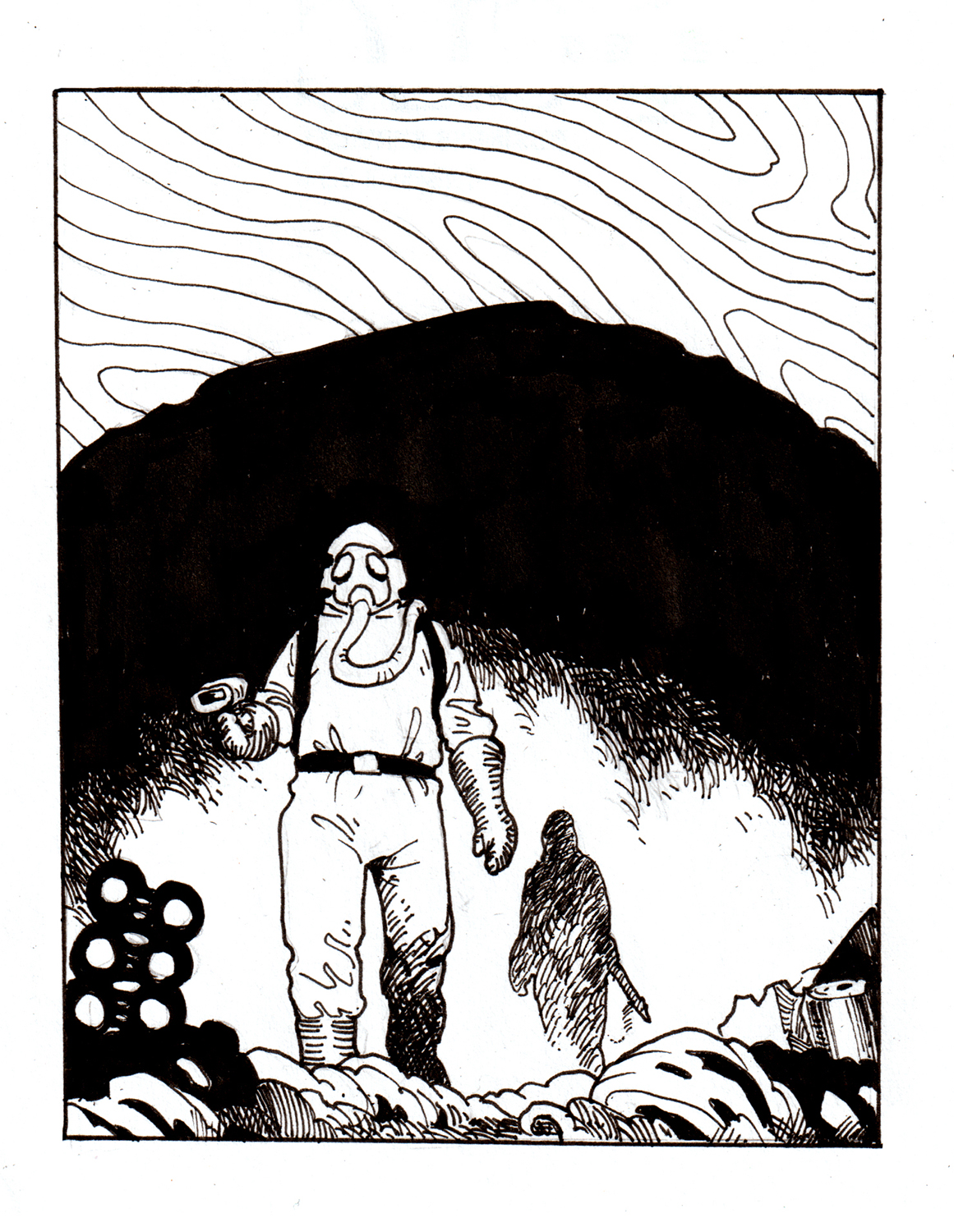
As the deserts crept slowly forward, entire cities were abandoned to be scoured by sandstorms, leaving behind eroded tells of commercial and industrial waste. Only crews of looters armed with XRF units and hazmat suits would brave the toxic ruins.
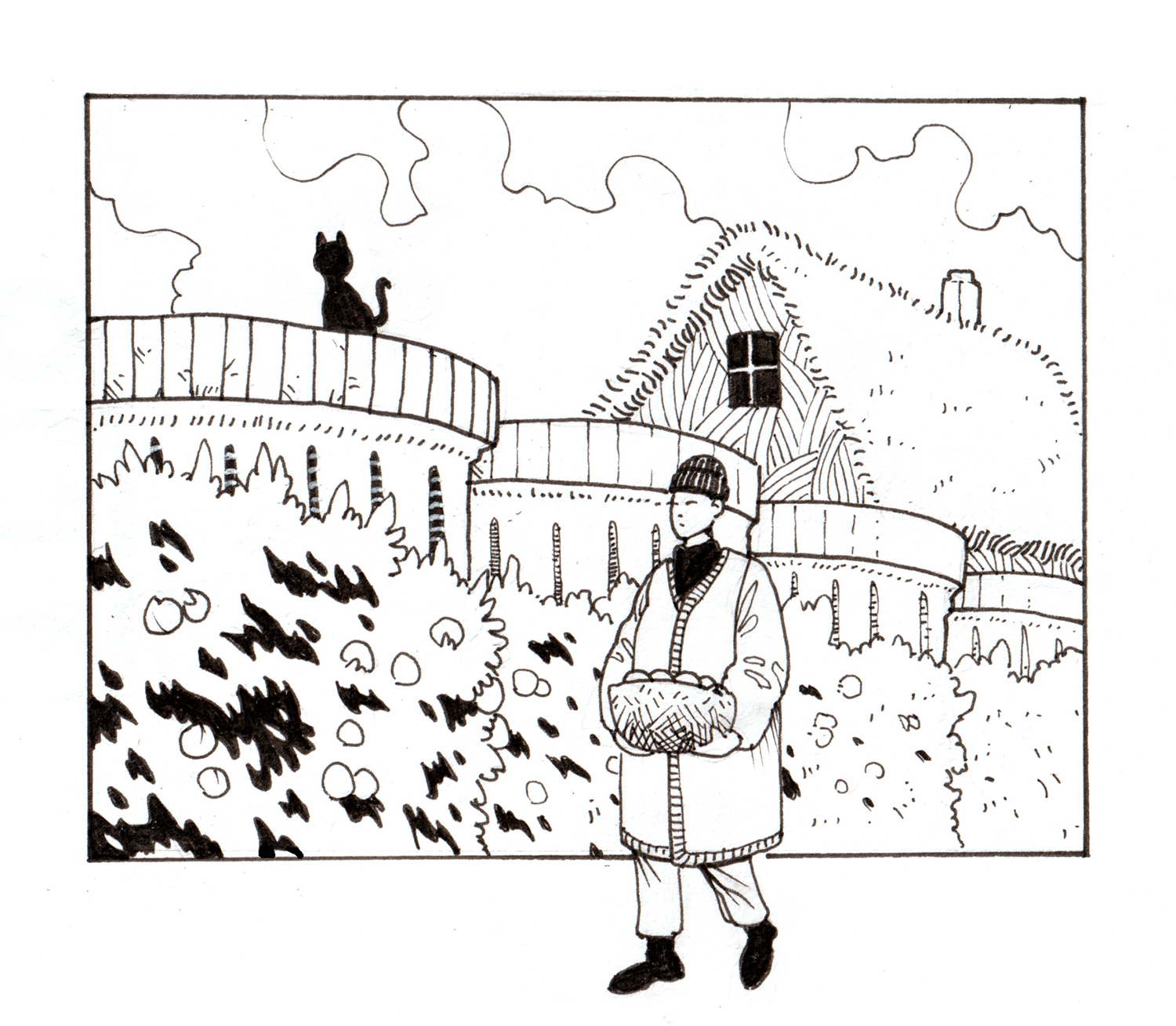
The revival of pre-industrial urban agriculture as a part of campaigns to “Make the suburbs bloom” in response to periodic food shortages is probably what kept suburbia from collapsing completely. In northern latitudes, labyrinths of serpentine fruit walls were constructed in lots that once housed parking spaces, foreclosed homes, and abandoned strip malls. As a matter of survival and later of tradition, their construction was made possible by taxation and corvée labor and their produce was publicly available to all neighborhood inhabitants. Turf roofs, another pre-industrial technology, also became popular as a means of domestic climate control. The ‘burbs that made it through the worst years of the long collapse emerged unrecognizable.
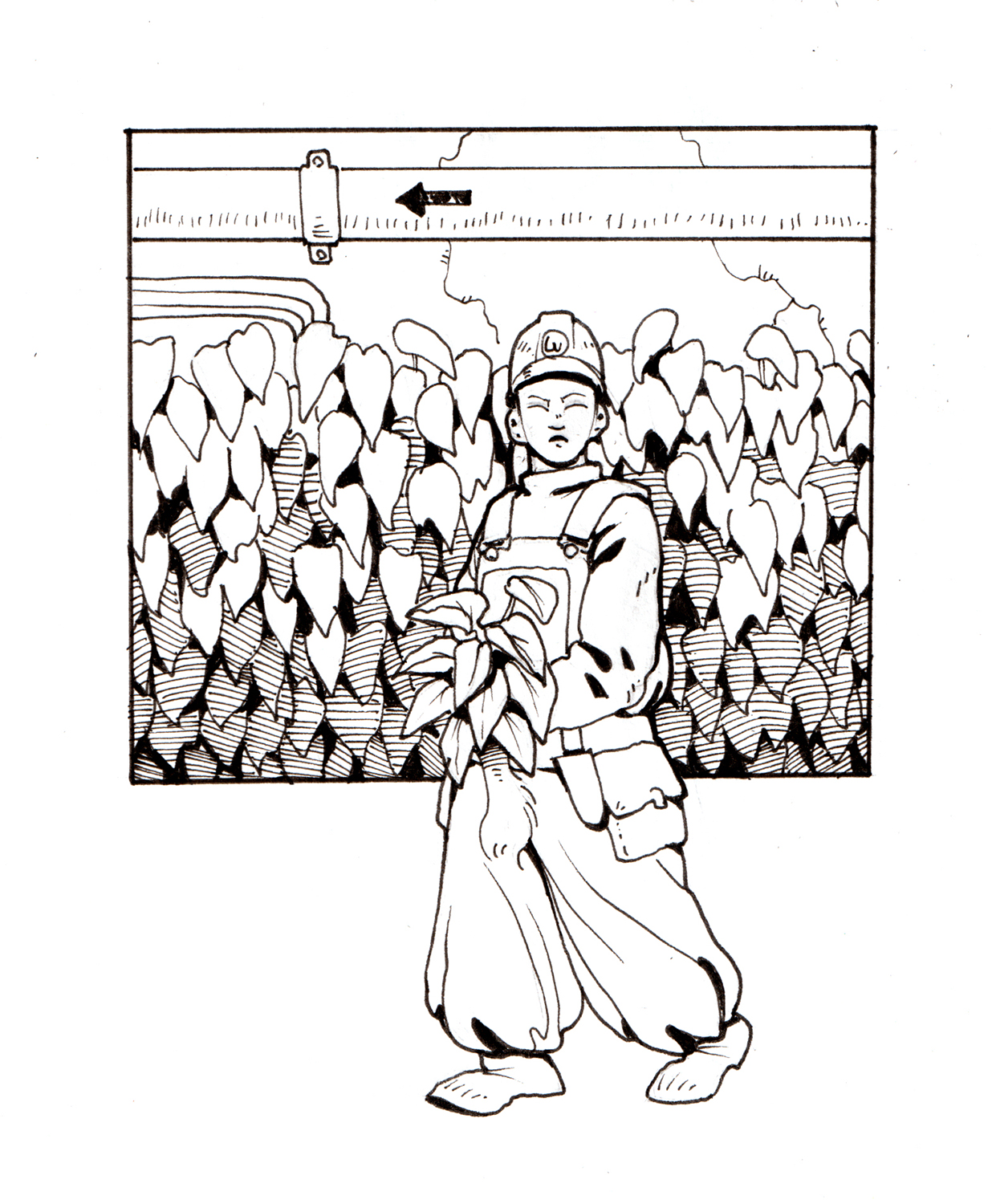
An interesting infrastructural development of the 21st century was the re-purposing of abandoned mines into subterranean farms. This was driven by efforts to reduce crop failures due to increasingly volatile surface weather as well as to find new space for agriculture as greater and greater swathes of land became unfit for growth or else placed under national park protection. In the massive mines of South Africa this system was developed extensively with titanic gravity batteries installed in deep vertical mineshafts to better provide energy storage.
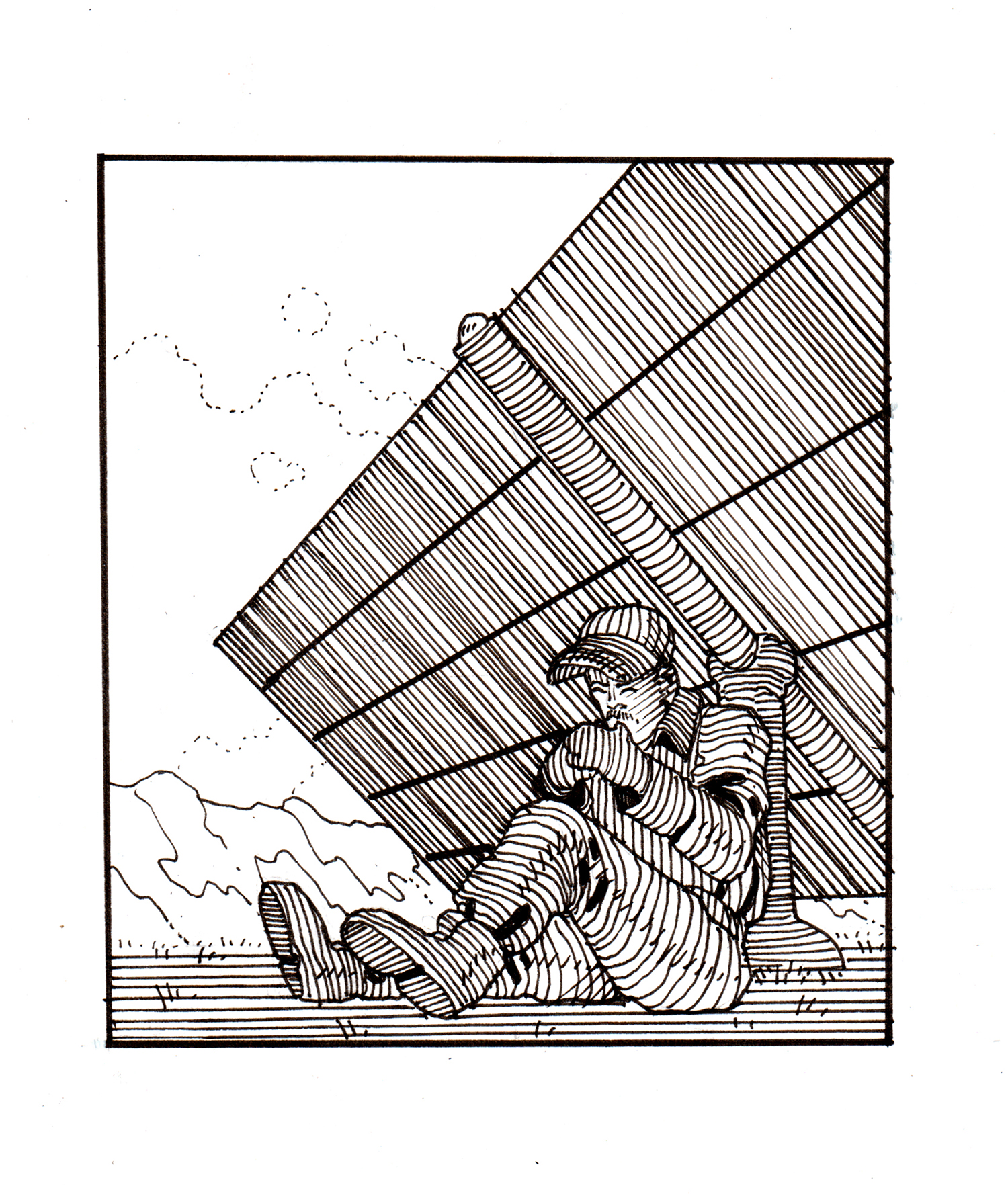
A technician takes a smoke break beneath a heliostat in the Atacama. With the depletion of fossil fuel reserves, solar thermal energy became a vital component of manufacturing and resulted in industrial booms in and around areas of exceptional solar irradiance worldwide. By the 2100s, the Atacama and Kalahari deserts as well as the Tibetan plateau and the Australian outback became known for their seemingly endless arrays of solar furnaces and parabolic concentrators.
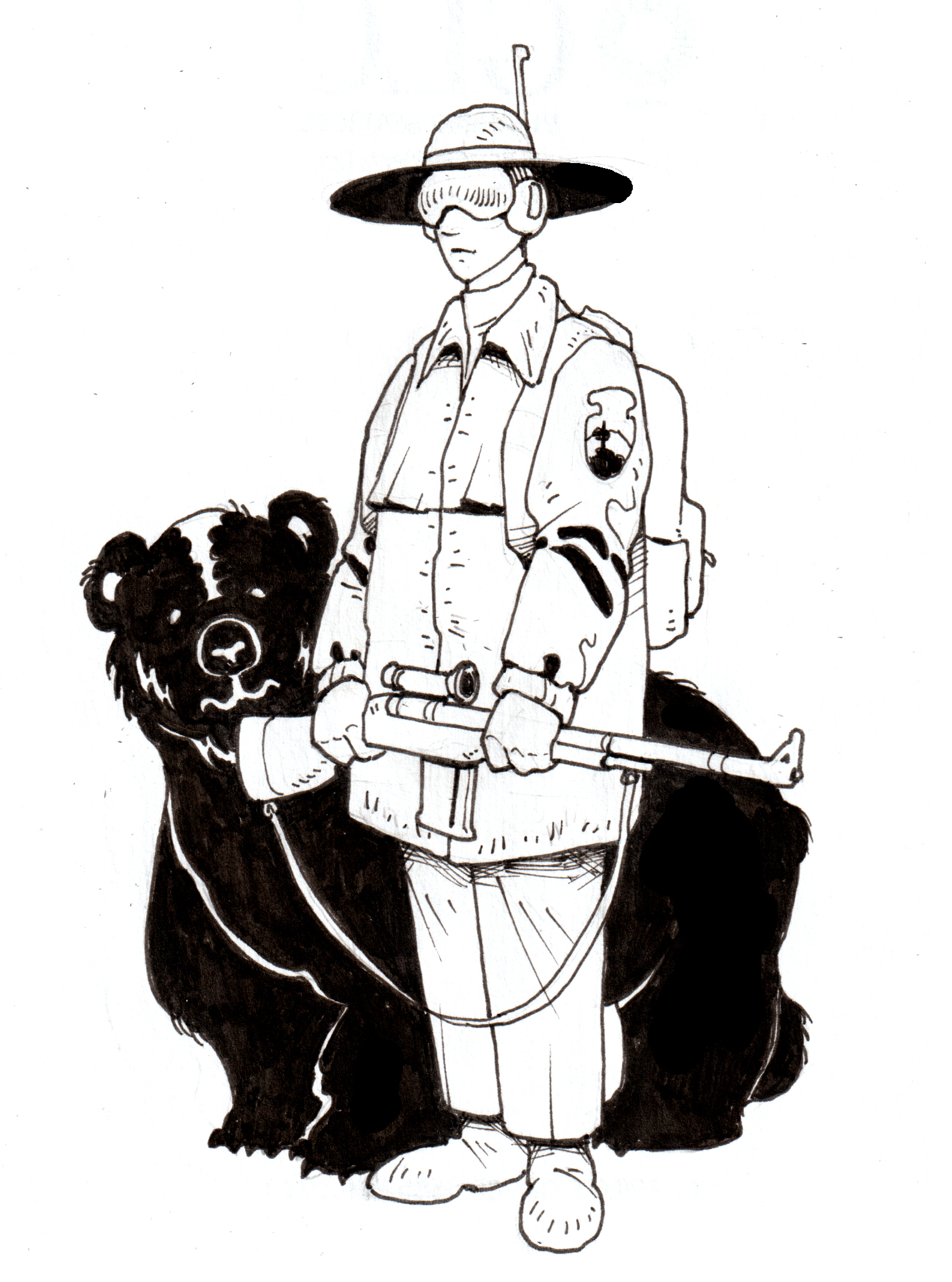
Collapsing economies drove a sharp increase in poaching and illegal mining and logging operations in protected natural areas. As a response to this, many governments found themselves forced to militarize their national park services if they didn’t want to see their parks cannibalized.

A mycelium craftsman scolds his apprentice for neglecting to properly dry out a piece of grown furniture resulting in a growth of mushrooms. In suburbs and cities where more organic waste was created than could be feasibly composted, mycelium was used to turn rubbish into insulative bricks and lightweight furniture, among other things.
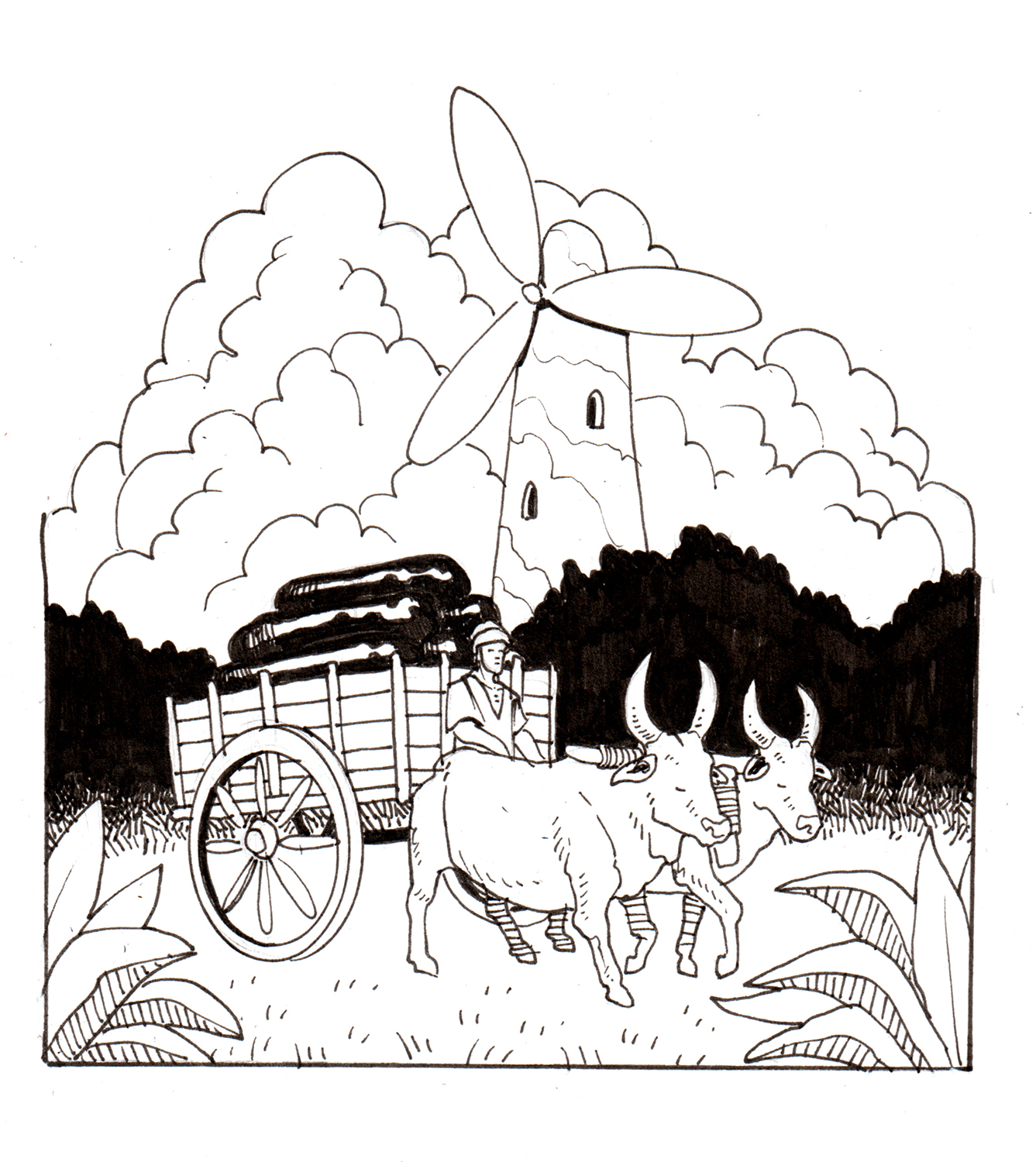
Delivery of compressed air batteries by oxcart. Over the 21st and 22nd centuries as the tide of industrialism and urbanization receded, rural communities found it easier to rely on technologies that could be repaired or recycled consistently over decades of use

Electronic waste prohibitions as well as concerns over the long-term repairability of micro-electronics actually brought about a resurgence in mechanical computation in the 21st century. Mechanical calculators became commonplace in engineering offices. Analytical engines built from open source schematics dating back to Babbage himself were actually built in significant numbers, usually by town governments looking to automate utilities.
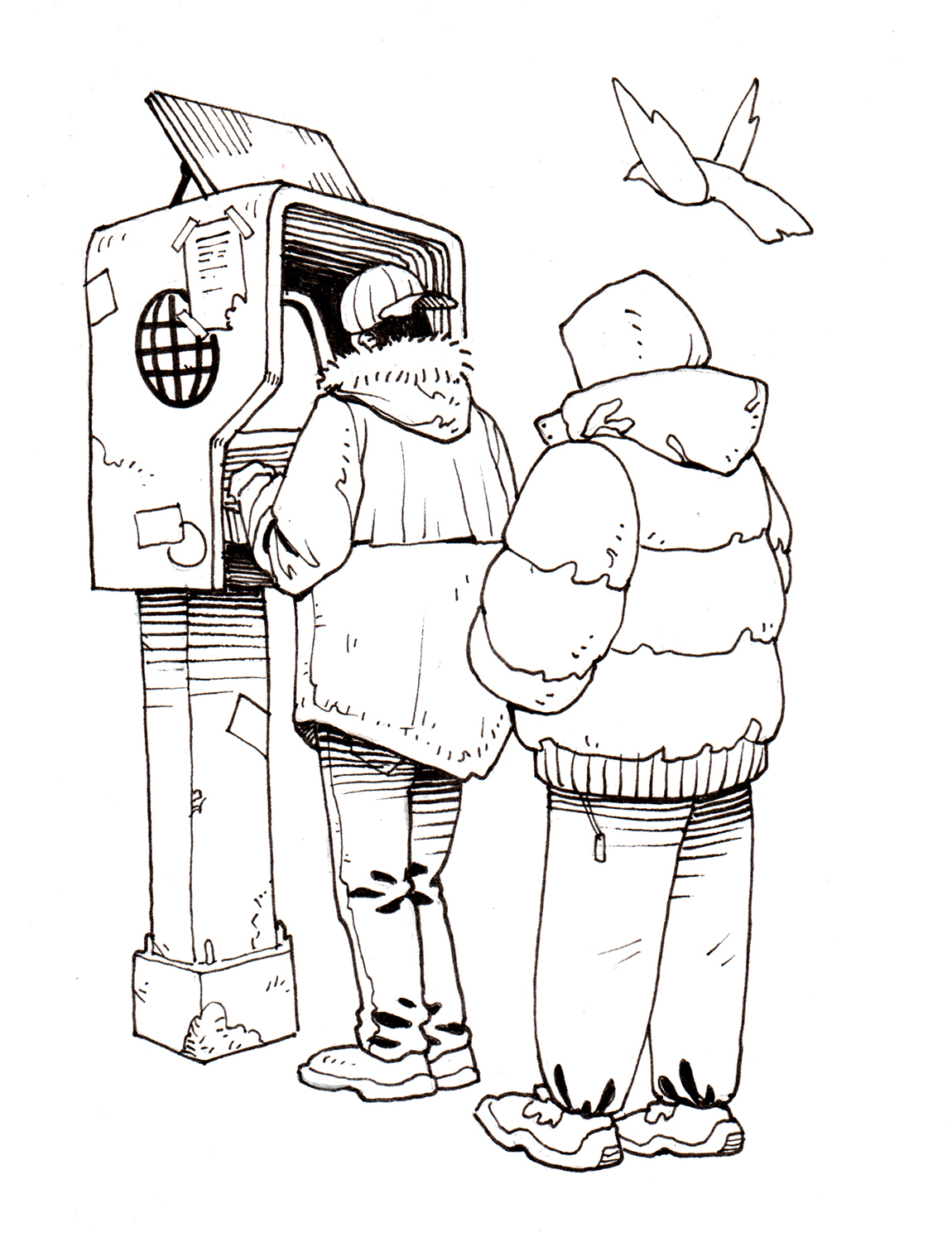
As consumer electronics became more expensive and existing devices broke down, public internet booths sprang up where anyone could access the wonders of the world-wide-web for a paltry $0.75 per 15 minute access interval.
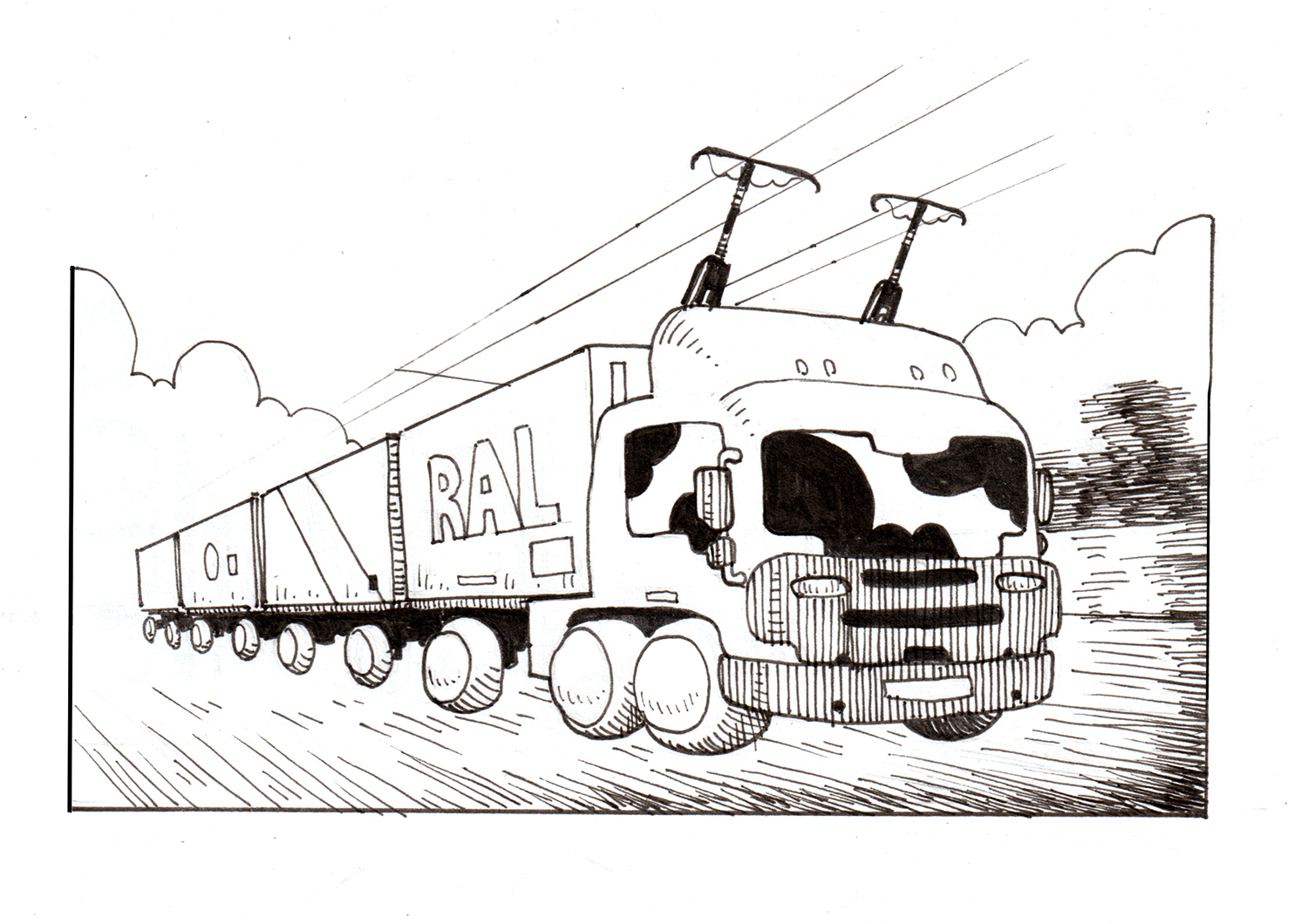
The Americans negligence of their own rail lines and public transit systems throughout the 1900s and early 2000s created a serious problem when they could no longer ignore increasingly severe oil crises from the 2070s onward. Their solution was to electrify the sprawling American highway system. Power lines arced over freeway lanes where trolleybuses and mile-long cargo trams replaced the once-ubiquitous automobile.
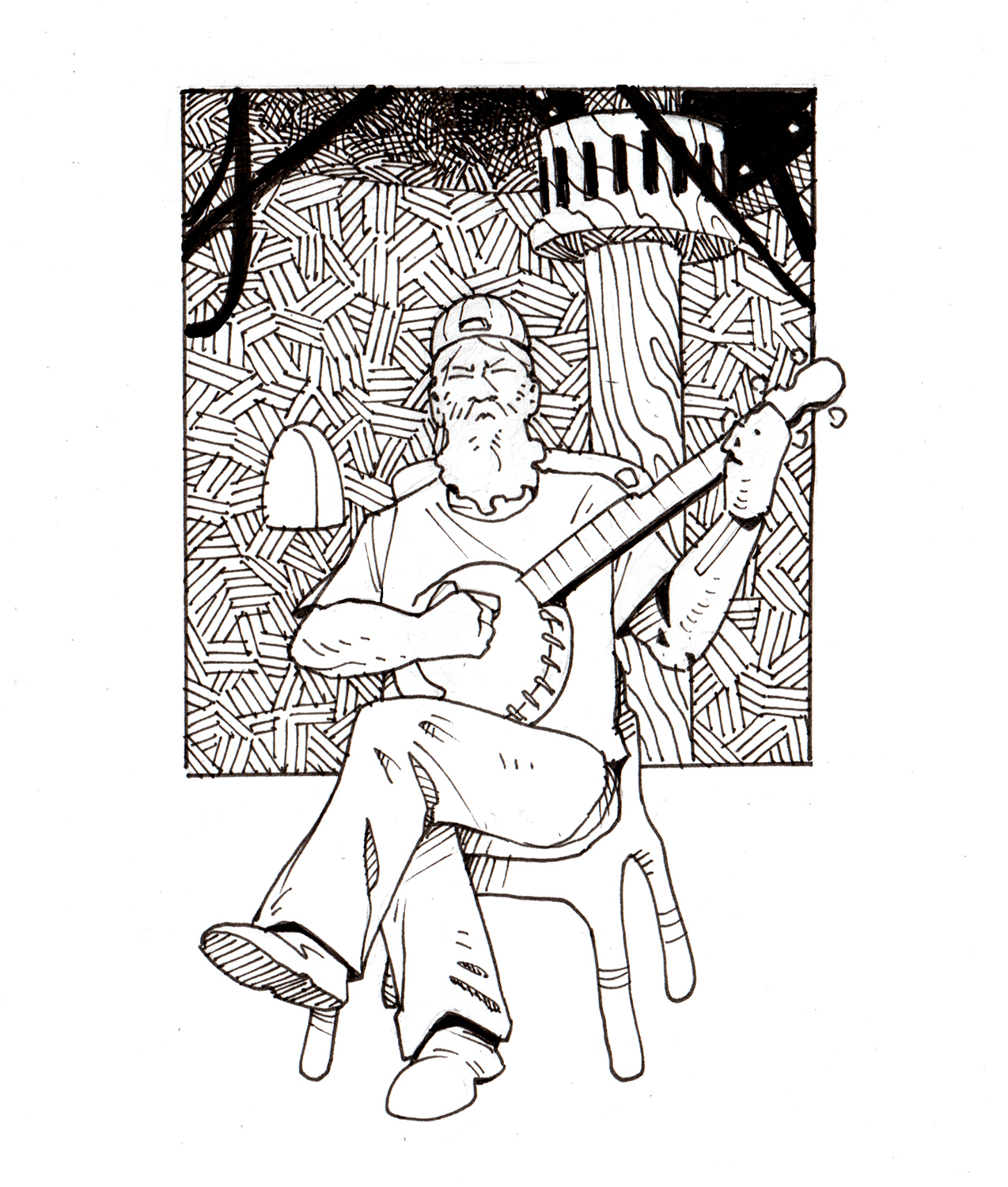
“An industrial wind / Blows from the west / It’ll burn out your eyes / And suck out your breath “
A miller in rural South Dakota takes advantage of a brief lull in the wind to play some old pre-collapse tunes. When the grids failed, people had to adjust their work to the rhythms of nature rather than an arbitrarily imposed schedule.
Lyrics from “Sauget Wind” by Uncle Tupelo
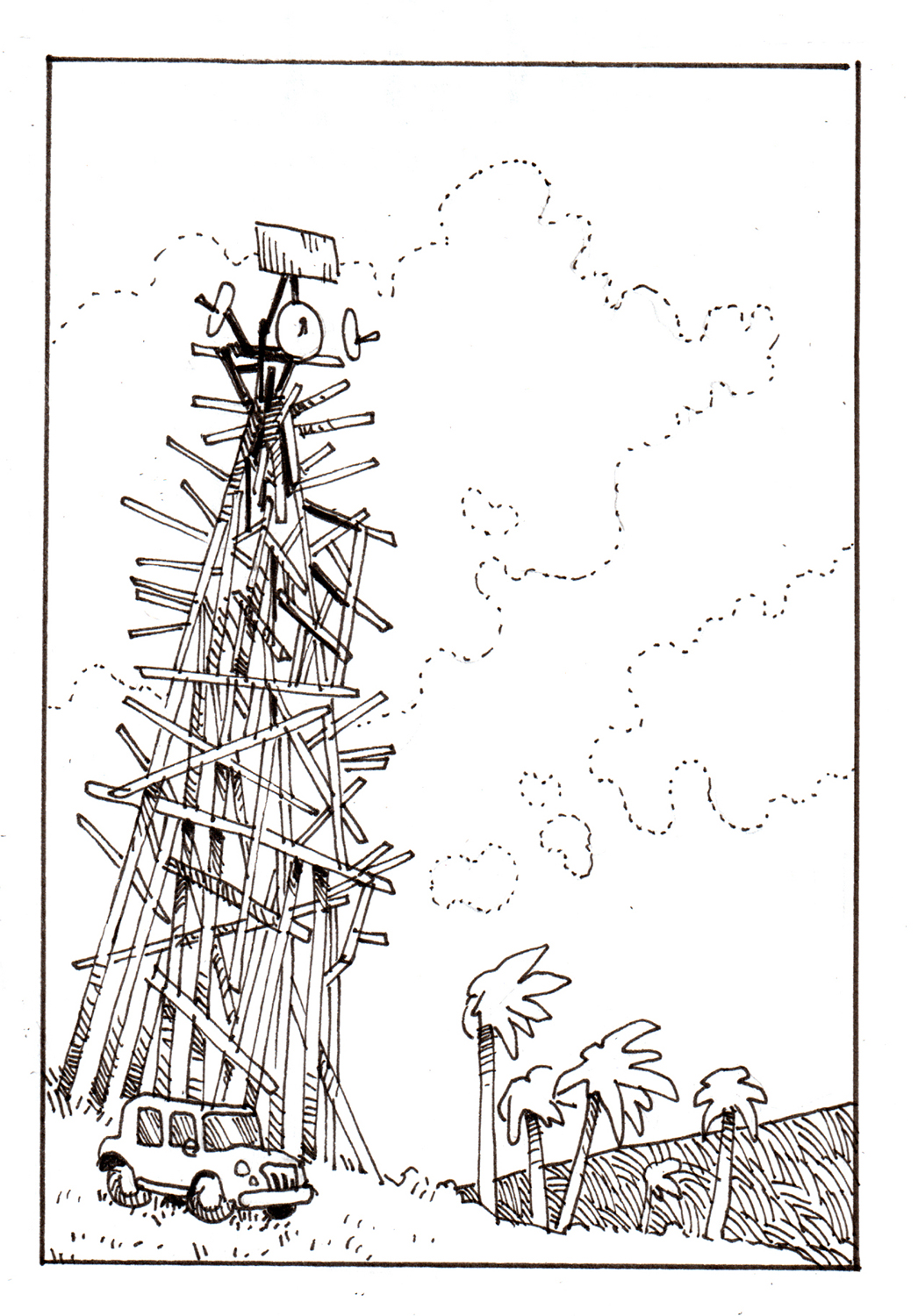
The collapse of international communications conglomerates left communication dead zones all over the world. On remote Pentecost island, residents applied traditional building techniques used in Nagol land-diving towers to construct long-range wi-fi nodes capable of rising above the jungle and mountains of their home.
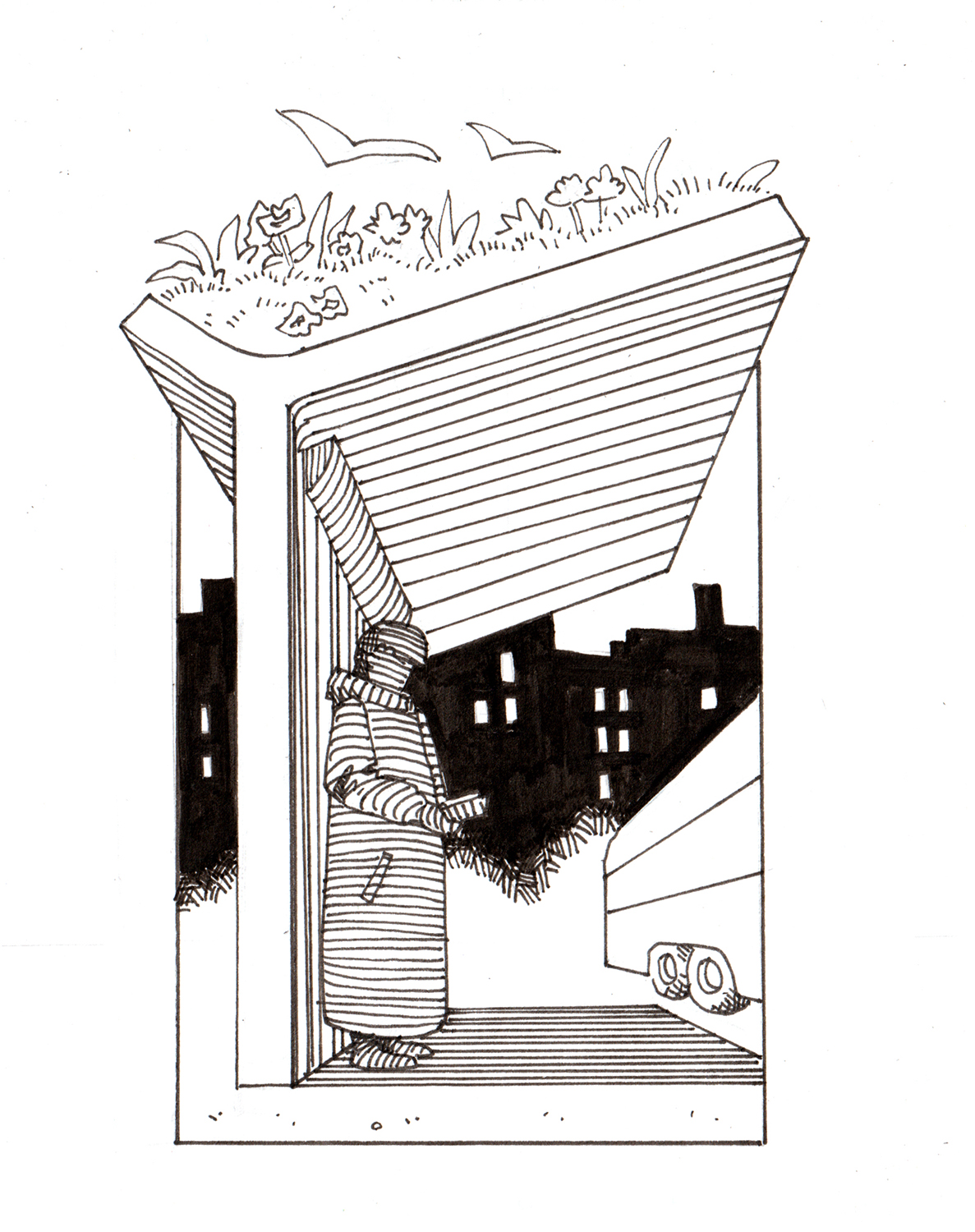
The “greening” of urban spaces began in most places as halfhearted greenwashing programs spearheaded by slick politicians and corporate interests looking to sway public opinion in their favor. However, serious efforts to bring back native flora to cities was surprisingly effective at rehabilitating bird and insect populations therein, as well as improving air quality. By the 2100s, flower beds sprouted from bus shelters and lawns topped office buildings in any municipality that hoped to be taken seriously.
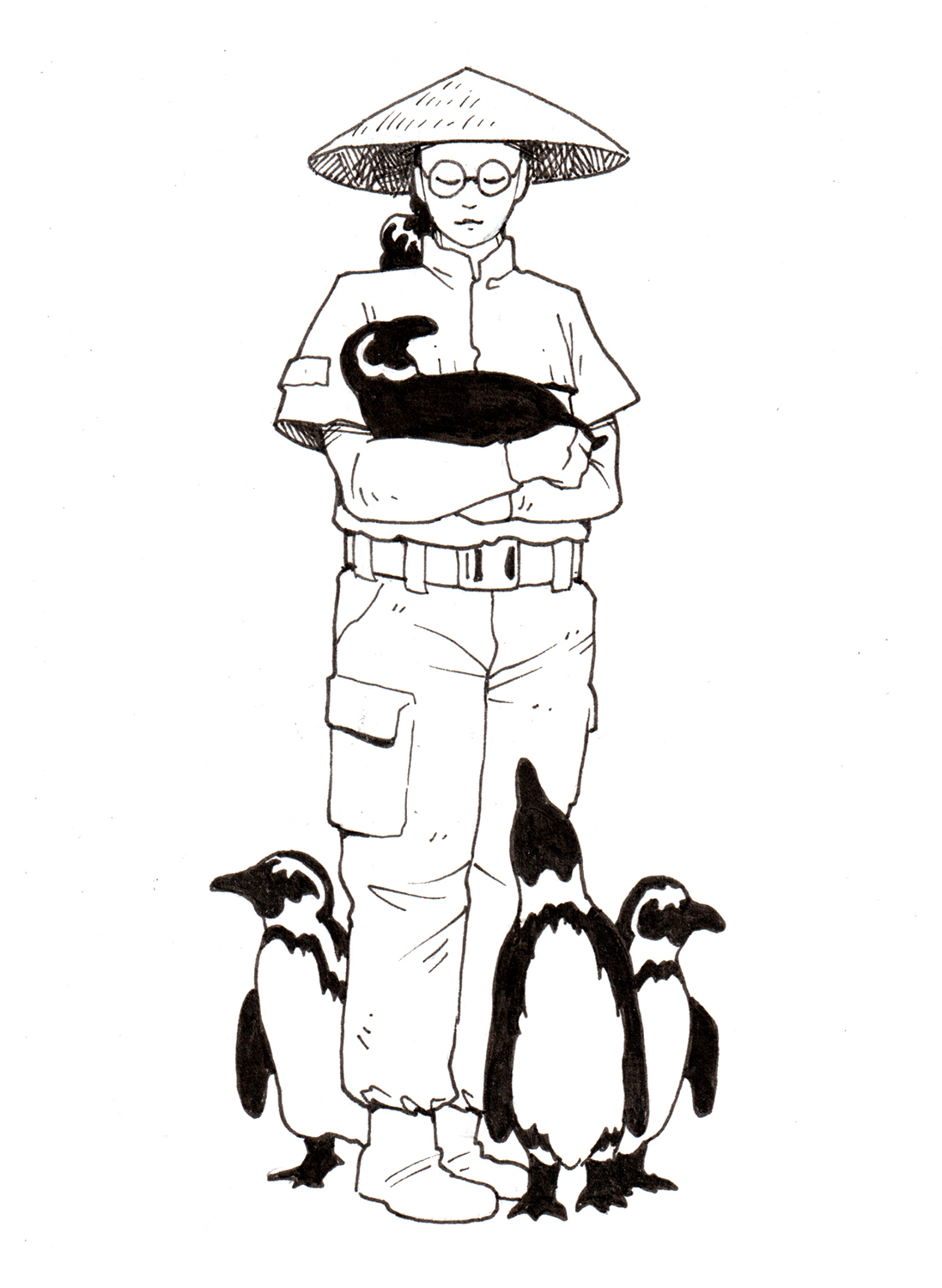
Biologist Dr. Jun Yunchao was instrumental in coordinating international efforts to create “archive biomes.” These wildlife refuges were stocked with the flora and fauna of rapidly disappearing ecologies in the hope that they could act as “time capsules” in which life could be preserved, studied, and possibly rehabilitated in the future. Detractors criticized these efforts as wasteful and expensive. Dr. Yunchao’s infamous response to such criticism was: “I’d rather see every nation on earth made bankrupt than one more species made extinct.”
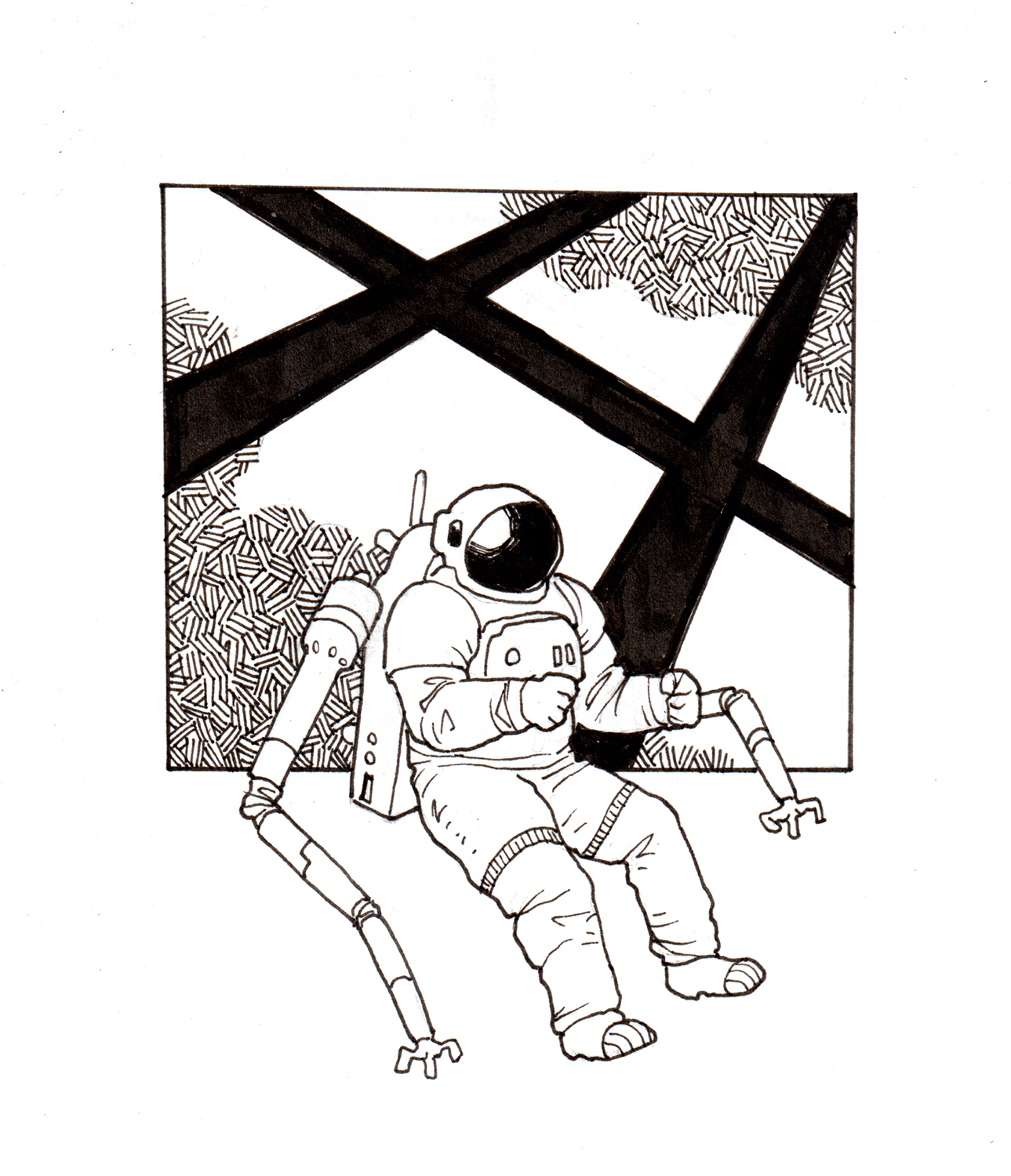
The Zhao-Hutchinson Supermassive Reflector Array (ZHSRA), the construction of which began in the 2170s, was the culmination of decades of international cooperation to rebuild a world ravaged by pollution and ecological collapse. It’s primary short-term goal was to aid in the re-growth of the northern ice cap by redirecting sunlight away from the pole and redistributing it towards industrial zones to be used for power. Long-term it would be used as a vital stepping stone to a dream of space exploration that had for so long been postponed.
